What’s a Customer Data Platform?
The Ultimate CDP Guide for Sports Organizations
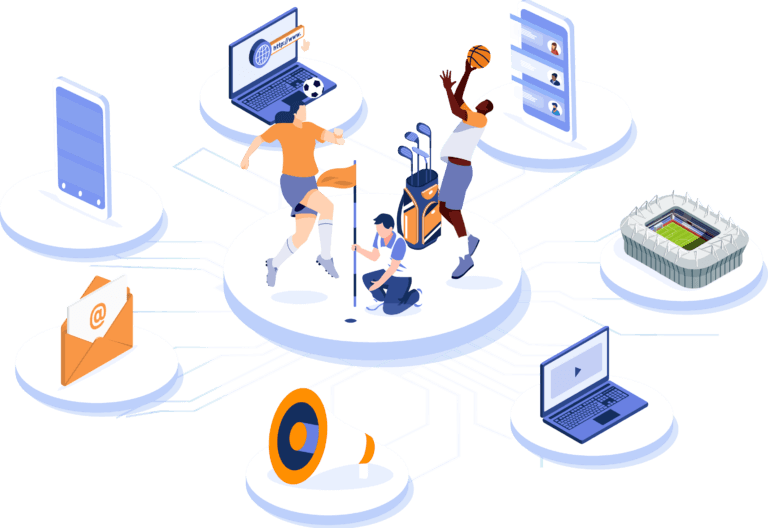

The term CDP is increasingly used by organizations, both data-driven organizations and more conventionally driven ones, across many industries including the sports industry. This is not very surprising as the platform helps sports organizations solve one of their greatest challenges: engaging fans across channels and increasing revenue streams by collecting and unifying data from multiple channels and sources into one place.
We understand that finding all the information you need to know about CDPs can feel overwhelming. For this reason, we created this ultimate CDP guide where we consolidate all information around CDPs in one place and how sports organizations can leverage it to meet their needs and goals.
This guide covers all the important aspects of CDPs. Enjoy!
1. What is a Customer Data Platform?
2. What are the key benefits of having a CDP?
3. What kind of data can you store in a CDP?
4. What kind of CDP solutions are there on the market?
6. How do you know if you need a CDP?
7. What to have in place before adopting a CDP
8. Why tracking the right KPIs matters
9. Old vs new way of connecting the customer data
10. How can you act on the data gathered in a CDP?
11. What differentiates a CDP from a CRM?
12. What differentiates a CDP from a DMP?
13. How long does it take to implement a CDP?
14. Buying a CDP vs building an in-house solution?
15. How can you calculate the CDP ROI?
16. 5 questions to ask before buying a CDP
17. What are some common CDP misconceptions?
18. How can you use a CDP in your organization? (Best practice & Use cases)
A Customer Data Platform (CDP) is a database which consolidates useful customer data (for sports organizations, supporter data) from several channels and data sources. It provides sports organizations with streamlined access to deep and specific insights about their supporters. A CDP contains first-party data that you can then enrich with second and third-party data to create a holistic view of your supporters.
It is a central location for all supporter data, such as:
and any other data related to the supporter. The CDP pulls this data from different sources and then cleans and combines it to create a single and unified supporter view.
A CDP, therefore, provides organizations with streamlined access to deep and specific insights about their supporters.
Once you have collected your data in one place (the CDP), so that you can analyze it and gain better insights about your supporters, you can thereafter connect the data to other tools and systems, such as your marketing automation tool, CRM, website, OTT-platform, Social Media platforms, etc. That way, you’re able to directly act on the data and insights you have received from it. Pretty cool, right?
Below you can see a visualization of a CDP.
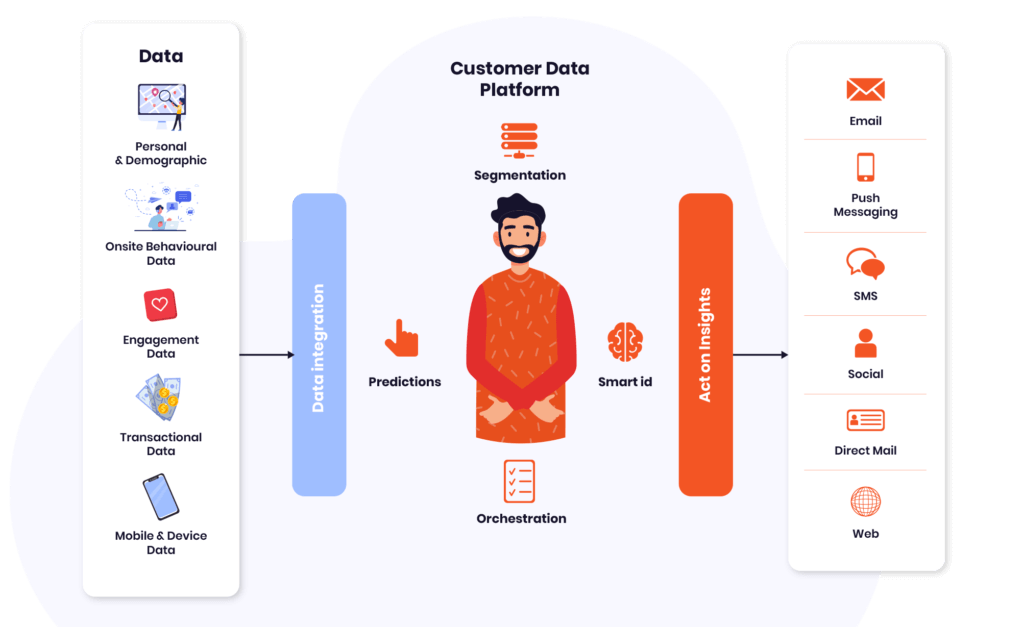
A CDP is designed to collect and combine data from different sources and create a unified supporter view. This way, you can better understand your target groups’ preferences, characteristics, and behavior.
Oftentimes, it is difficult to know the actual costs and returns of marketing efforts. With a CDP, you can clearly see what you are spending and how each channel and campaign is performing. This way, you get transparency in your marketing efforts.
By gathering, analyzing, and acting on your supporter data, you can make better and reality-based decisions. Your organization can respond to changes faster, both in regards to the market and with supporters.
Today, many organizations spend a lot of time collecting and trying to understand data. By automating this process and getting it delivered in real-time, you have time left over to create profitability and a better supporter experience.
Nowadays, we use more channels and devices than before, and we expect the experience to be the same - no matter where and how we decide to interact with organizations. By having a 360° supporter view, made possible by using a CDP, you can create a unified supporter experience that is personal, engaging, and relevant to each supporter.
A CDP is built to handle any type and category of data. It can connect all sources of supporter data – internal or external, structured or unstructured, batched or streaming. It can store first-party data that you can then enrich with second and third-party data to create a holistic view of your supporters.
Any data that a supporter intentionally and proactively shares with a brand is called ‘Zero-party data’.
This is the best type of data because first-party data is information that you collect, first hand, from your audience.
This is the next best thing. Second-party data is someone else’s data (usually a trusted partner who’s willing and has the consent to share their supporter data with you).
This helps to complement the current data. Third-party data is usually provided by companies, also known as data aggregators, that sell user data. You should be very careful when using this type of data though. Make sure that you can trust the source before you commit to a long-term contract.
To give you an idea of what’s possible with a CDP, below are a few examples of what kind of data you can collect:
The CDP Institute, a vendor-neutral organization dedicated to helping companies manage supporter data, groups CDP vendors into four categories based on the functions their systems provide.
There are great variations among vendors within each category. These four categories are:
Data CDP: These systems gather customer data from source systems, link data to customer identities,
and store the results in a database available to external systems. This is the minimum set of functions
required to meet the definition of a CDP.
Analytics CDP: These systems provide data assembly plus analytical applications. The applications
always include customer segmentation and sometimes extend to machine learning, predictive
modeling, revenue attribution, and journey mapping. These systems often automate the distribution
of data to other systems.
Campaigns CDP: These systems provide data assembly, analytics, and customer treatments. What
distinguishes them from segmentation is they can specify different treatments for different individuals within a segment. Treatments may be personalized messages, outbound marketing campaigns, real time interactions, or product or content recommendations. They often include orchestrating customer treatments across channels.
Delivery CDP: These systems provide data assembly, analytics, customer treatments, and message delivery. Delivery may be through email, Web site, mobile apps, CRM, advertising, or several of these.
FYI, Data Talks CDP is a ‘Data’ & ‘Analytics’ CDP. To see how it works in action, you can explore our demo.

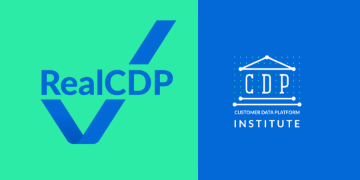
To help buyers identify real CDP vendors, the CDP Institute provides a RealCDP program. This program is designed to differentiate the real CDP vendors from the ones with incomplete systems.
Common examples of incomplete solutions include:
To make sure you identify a real CDP, use the checklist below to make sure that your (soon to be) vendor is fully compliant with the requirements.
#1 Collect data from any source
The CDP solution should be able to collect any type of data, such as:
#2 Capture all details from the collected data
The CDP solution should be able to store any input data without losing any details. This means all details associated with purchase transactions, promotion history, web browsing logs, changes to personal data, etc. Inputs might be physically reformatted when they’re loaded into the CDP, but can be reconstructed if needed.
#3 Store the collected data indefinitely (subject to privacy constraints)
The CDP solution should be able to retain all the collected data for as long as the users specify (subject to regulatory constraints). For instance, specific metadata fields should exist that indicate the time that the data was collected into your CDP, so that the data can be deleted after a certain period of time (if requested by the supporter).
#4 Create unified profiles of identified individuals
A CDP should be able to connect many different identifiers from multiple platforms and devices in real-time to enable people-based targeting, personalization and measurement. Through deterministic and probabilistic matching, it should be able to create universal and persistent supporter profiles by solving the identity of supporters and fans across different states (known & unknown).
#5 Share data with any system that needs it
The CDP should be able to integrate out-of-the-box with any software system through connectors and ready-made APIs, allowing access to data for deeper analytics while boosting supporter engagements.
The CDP Institute authorizes qualified vendors (that comply with points 1-5 above) to display a ‘RealCDP badge’. If you can’t find it on the website of the vendor you are considering buying from, then make sure to ask if they have it.
To help you figure out if this is the case for your business, we have gathered the following list of 10 questions that you can ask yourself to find out if a CDP is a right fit for you:
If the answer is negative to at least one of the questions above, then you probably want to consider a CDP solution, which helps to solve all of the above.
Below is a series of crucial steps most companies omit (or avoid intentionally) since they might be time-consuming if not done right. However, having a plan in place and well-defined requirements is the key to any project’s success, including the adoption of a Customer Data Platform.
Ready? Let’s get started!
#1 Start by measuring the effect of doing nothing.
In other words, what would happen if you didn’t advertise at all on a specific channel or if you didn’t set a data-driven prospect prioritization process? Measuring the effect of doing nothing allows you to create a baseline to measure against & predict the return-on-investment of any use case that you might think of.
Although this might sound trivial, most companies omit this step since they think it is unnecessary or takes too much of their time.
#2 Define control groups
Once you have a complete overview of your current standing, the next step is to define control groups. A control group is a test group of supporters who receive no special treatment. The control group is a vital part of your testing process since it helps validate testing results and prove the return-on-investment of a specific use case. That way, you will be able to understand if you really moved the needle in the right direction or whether it was just a coincidence that would have happened anyway.
#3 Define use cases
It is now time to define your use cases. A use case lets you show your team members and other relevant stakeholders what to expect when using a CDP and what outcomes you can achieve. A use case is a powerful and reusable piece of content, since it allows you to put the CDP in a particular context, making the information easier to digest and understand.
#4 Choose your KPIs
Last but not least, choosing your KPIs (that reflect your strategic goals) and metrics (reflecting your tactical goals) will let you show how your specific use case has contributed to the overall growth and ensure that you gain credibility from your team members and other relevant stakeholders. Because without measuring the right KPIs and metrics against specific goals, you cannot build a rapport with the relevant decision makers in your organization, since different parts of the organization care about different issues.
Following the recommendations above will help you feel more confident about your decision to adopt a CDP. You will be confident enough to articulate (internally & externally) why you chose to adopt a CDP, what the impact has been, what the expected return-on-investment is, and how you are going to monitor the success thereafter.
Key Performance Indicators (KPIs) are like milestones towards the goals you are trying to achieve within the organization. If marketing teams struggle to find the right KPIs (reflecting strategic goals) and metrics (reflecting tactical goals), they will fail to gain credibility within the organization and won’t be able to show how they are contributing to the overall growth of the organization.
Without measuring the right KPIs/metrics against specific goals, you cannot build rapport with the decision-makers in the organization. Therefore, if you want to transform your company and work data-driven, then your marketing team should include data evangelists who preach supporter-centric decisions and data-savvy people who can perform in-depth analysis. Basically being able to link almost any marketing initiative to a revenue stream.
So, where do you start?
Every KPI should be set based on goals. Hence, your KPIs should fulfill the SMART criteria. SMART stands for Specific, Measurable, Attainable, Relevant, Time-bound. In other words:
Those KPIs should be evaluated on a regular basis, not monthly but at least quarterly so that you make sure that they are still valid and in accordance with your company’s direction.
Once you have defined the KPIs, you are ready to decide on what kind of data you need to collect. That way, you avoid one of the most common mistakes that companies make, gathering all the possible data available ‘just in case’. You should keep in mind that KPIs are like milestones towards the goals you are trying to achieve. By identifying and monitoring the key ones, you’ll be clear on your progress towards marketing, sales, and supporter experience goals.
Example 1: Sport (B2C): If you’re a sports organization with an online merchandise store, below are examples of KPIs that could be relevant to track:
Example 2: Sports: If your sports organization is, for example, a Golf club then the below KPIs could be relevant to track:
Example 3: Sports (B2B):
If you are a sports organization that wants to boost the sponsorship value of your partners:
Once you have identified what KPIs are relevant for your business, you’re now ready to adopt a CDP because you know what data to collect.
Old way
The most common approach thus far has been connecting each and every software with each other. Thus, you would have something like the following:
Those connections were in the best case scenario bidirectional. So, on average, you would need to monitor and maintain ~6 bidirectional integrations and make sure that the data flows seamlessly between all systems. In addition, you would use 2-3 data visualization tools (without counting excel/google spreadsheets) since every department would use a different tool to get a report on their performance.
So, what is the outcome?
Data-driven organization! No, just kidding. Confusion for the C-levels, frustration for those responsible for reporting on KPIs, and the IT department in the middle trying to maintain all this infrastructure. In other words, the lack of a single source of truth would make your organization unhappy.
It is, therefore, time to expand on how to best store and connect your data, so you set yourself up for success!
New way
To store data, you need a data storage system. Many companies today use a Data Warehouse to store data, while more and more are starting to use a Data Lake. Many companies need both. (If you don’t know what a Data Warehouse or a Data Lake is, no worries, just keep on reading to find out).
A data warehouse and a data lake both serve the purpose of storing data, but in very different ways.
Data warehouse: A Data Warehouse is a system that pulls together data from different sources for reporting and analysis purposes. The reports are often used to make operational decisions. A Data Warehouse stores processed and refined data according to the business logic. This means that you need to prepare the data by cleaning, transforming and aggregating it before using it for analytical purposes.
Data lake: A Data Lake is a system that stores data in its raw format. Basically, you can store your data as it is without having to first structure it. Data stored in a Data Lake can be in structured, semi-structured or unstructured format. You can import this data to your Data Warehouse to add more business value to it, or you can use that data in dashboards and visualizations directly from the Data Lake. Be aware that the direct visualization of data from a Data Lake can be risky. This is because the data is not cleaned and it might therefore contain corrupt or duplicate records that might, for example, affect the final figures greatly. By using a Data Lake, you are building a strong data foundation for better decisions and a single source of truth.

A Data Warehouse focuses mainly on reporting, and the data modeling and format is very strict, which limits the data you can store. A Data Lake, on the other hand, is more flexible and can handle more sources of data with any kind of format. It will also uncover patterns about your supporters’ behaviors, which will ultimately help you create an engaging and relevant supporter experience.
What kind of data can you store with a data lake?
If you’re looking to act on your data – a Data Lake is what you need. It’s the foundation for any data-driven company. And as you might have guessed, it is an essential part of a CDP!
All in all, you should connect every software tool (MA tool, CRM, ERP, POS, etc.) with the Data Lake first and then perform any data cleaning and transformation. As a next step, you pass the nice & neat data to the Data Warehouse (if you have one) & visualize the results. One single place where every department can access and evaluate their KPIs. Sounds pretty awesome, right?
Then you can decide if you want to act on the insights (you should!) by passing this information to your chosen tool, such as a marketing automation tool, CRM, or Social Media platform.
Let’s talk about how you can act on your data insights gathered in a CDP. As we have already established, a CDP helps you create a 360° supporter view and makes this data available to other tools and systems. Marketing automation is one of these tools; it’s the tool you need to create a seamless, omnichannel experience for your supporters.
First of all, what does marketing automation mean?
This means that you can nurture prospects, thanks to the 360° supporter view you have received in your CDP, with highly personalized, engaging, and relevant content and then convert these prospects into happy and satisfied supporters. When done correctly, using marketing automation together with a CDP can generate new revenue streams and provide a great return on investment.
So that you can be as flexible as you’d like you can both use Data Talks CDP directly to launch engaging and personalized email and SMS campaigns or connect it to any marketing automation system of your choice. If you opt to go for the first option, it will allow you to have the ‘Collect-Analyze-Act’ capabilities in one and the same platform. With the latter, you’ll avoid having to switch systems from an existing marketing automation system and you can continue to use a system you’re familiar with to act on your supporter data. All the campaign data generated in your marketing automation system will swiftly be transferred to Data Talks CDP and visible in your unified supporter view and analytics.
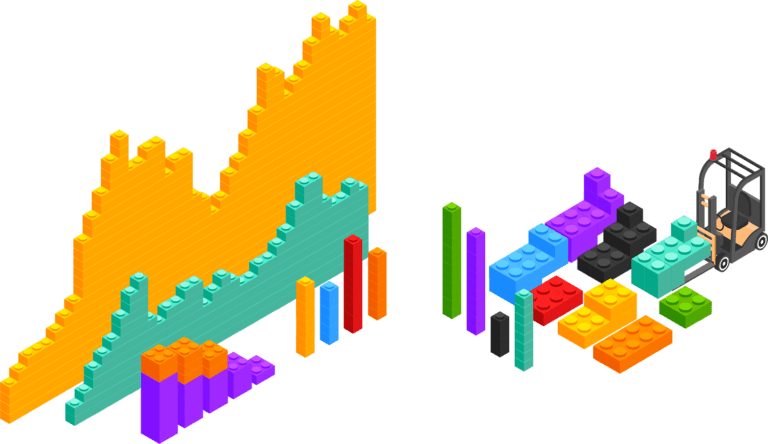
A Customer Data Platform (CDP) and a Customer Relationship Management (CRM) software share some similarities. However, their primary purpose and function have many differences.
A CRM stores data of supporters who had some interaction with your business. It could be data about your supporters and potential supporters, their product needs, and purchasing history. Hence, a CRM is critical for sales and supporter-facing roles to manage supporter data.
On the other hand, a CDP is a database that collects and unifies useful supporter data, including in-stadium purchases, ticket purchases, stadium entrance data, merchandise data, personal data, mobile app behavior data, and any other data related to the supporter.
The CDP pulls this data from different sources and then cleans and combines it to create a single and unified supporter view. Thus, CDPs are essential if you plan to execute scalable, personalized, and omnichannel campaigns.
It’s not about choosing between a CDP and a CRM. Rather, sports organizations should know the difference between a CRM and a CDP in order to truly leverage each one of them for their respective purposes.
A Data Management Platform (DMP) is used when you want to build marketing campaigns for audiences that are unfamiliar to you. DMPs are best for this because they primarily use and process third-party data. They can thus give you access to audiences that you don’t know. You can then use that new data to build a targeted marketing campaign. However, relying on third-party for audience targeting is becoming limited due to the death of third-party cookies.
CDPs are built for processing zero, first, and second-party data. If you plan to create highly personalized marketing campaigns based on your own data, use a CDP. Your CDP can gather website data and send it to any number of different tools, depending on your needs. Moreover, a CDP can also handle the segmentation and creation of look-alike audiences.
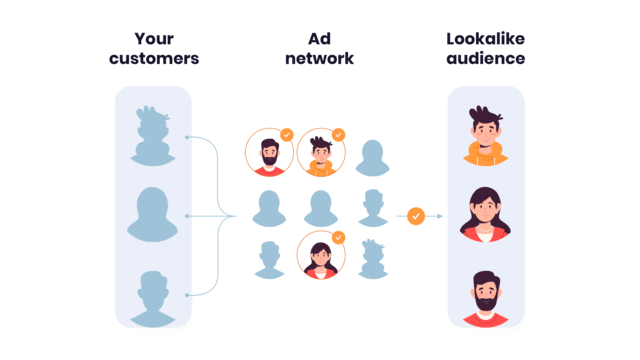
This is a reasonable question. You read all this information about CDPs, you speak with a few vendors and you understand the complexity. On average, it takes an enterprise 6 weeks to build one integration. Given that you have 5-6 data sources, one Marketing Automation software, and a visualization tool to connect, that is about… well, no need to do the math. It seems like a never-ending project.
And that would be the reality in case you choose to build instead of buying a CDP solution.
So it is not unreasonable to assume that the technical implementation could take years, which you cannot afford since you need to show the ROI internally in as short of a time as possible.
Well, we have some good news for you!
Basically, the integrations and the various connections are pre-built and built-in by the CDP vendor – saving you a lot of time and money. Not to mention, you will not have to maintain these integrations once they are live.
Given that you select the right partner and that your stakeholders are committed to the project, the technical implementation should not last more than one month. You could, therefore, have your first use cases up and running in a couple of months, allowing you to quickly demonstrate the return on investment.

To build or not to build… that is the question
This is probably the biggest question that comes to mind when IT and marketing join forces to evaluate new technology that would likely add value to their software arsenal.
You want to deliver a world-class supporter experience, based on your data. So after some thorough research, you come to the conclusion that a Customer Data Platform (CDP) will enable you to reach your goal. Now, how will you go about implementing it?
As we have established, you have two choices: either you build your own solution in-house (with all the management and upkeep that this entails), or you buy a solution from a vendor. It can be a difficult decision, with a number of benefits and drawbacks to either approach.
To help you make the right decision, we came up with the following framework, and we advise you to treat it as a rule of thumb. We are pretty sure that it will yield the right result. Let us know otherwise 🤓
|
Build – develop Inhouse |
Buy (SaaS) |
|
|
Do you normally build IT solutions internally? |
Yes, we have a dedicated team internally. |
No, we normally subscribe via a SaaS business model. |
|
Uniqueness of the problem |
If the problem is completely unique and has never been addressed before, you might have to build. |
If it has been solved in a way where you can pay for part of it, yet get the full value, why not getting it ready? |
|
Initial investment |
• People investments • Platform investments • Opportunity cost |
• Relevant stakeholders’ time |
|
Time from decision to using the solution |
Considering 6,5 weeks for each integration, you can expect from anything between 32 – 52 weeks. |
3-4 weeks, including onboarding |
|
Running cost |
High, depending on how many people needed to maintain the solution and staying updated with the software changes. |
Medium since the right vendor provides the support and knowledge needed |
|
Internal tech resources |
High (explained above) |
Low |
|
Internal tech competencies |
• IT • Development • Maintenance |
•IT |
|
Solution lock-in |
If you build it, it’s hard to change your mind and adapt when the business requirement changes. You will have to continue building, or accept a large sunk cost. |
A SaaS model gives you an easy way out if the solution doesn’t work for you and your organization, and most SaaS providers will hear your requests and discuss future developments with you. |
|
Security |
Build a secure solution to avoid a costly data leak |
Buy a secure solution from a trusted vendor |
Let’s start by making one thing clear: The CDP itself doesn’t generate ROI. However, a CDP is a technical backbone that helps you build a solid foundation to collect, analyze and act on your supporter data. It is your tailor-made use cases that will get you the ROI, and that is why we believe it is absolutely crucial to define your use cases (combined with the KPIs to measure success) before you start evaluating vendors.
So, how should you think about it?
📝 Step 1: Get some statistics from your existing MarTech stack
Go to your Google Analytics or CRM software and find out how many supporters you have. What is the average revenue from each supporter and what is their buying frequency? Depending on the setup, you could also find statistics around your emails (deliverability/open rate/click rate, etc). How many users abandoned their cart (if you have a sports merchandise store) and what is the conversion rate (this definition is unique for each organization)? Now based on these questions, you can find out how many supporters you are serving today and what the potential is (total addressable market) both in terms of volume and revenue.
📝 Step 2: List your defined use cases and their respective activities
We would suggest you have at least 2 use cases, to begin with. Keeping in mind our mantra ‘Collect, Analyze, Act’, you should be able to answer what will happen in each phase. What kind of data is available and what data you need to collect for your use cases, what you expect to get out of the data analysis, and how you are going to respond to the outcome (send a personalized email/SMS, show a website pop up, show mobile push notification etc.)
For inspiration, here are a few examples of use cases:
Pro-tip #1: It is very beneficial to map the whole supporter journey for each use case so you can identify supporter touchpoints and communicate internally what you want to achieve.
Pro-tip #2: Don’t forget to set KPIs and Metrics to measure the success of your use case activities.
📝 Step 3: Tie each use case with an expected ROI
Now that you have defined both use cases & KPIs, you can set a financial value for each activity. Given your current situation (step 1) and your assumptions (step 2), you should now be able to articulate a revenue impact for each use case.
We would suggest you create 3 different scenarios: one optimistic, one realistic, and one pessimistic so that you are well prepared for all questions. Don’t forget to include and measure the amount of time and money saved from building and maintaining custom integrations, logging into several systems, working with manual processes (i.e uploading excel files), and potential GDPR issues.
If you need help to build your case, don’t hesitate to reach out to us at marketing@datatalks.se.
🔎 Can the CDP ingest data from a variety of sources?
Make sure that the CDP has the ability to collect all the supporter data you want to collect. This can be data from a CRM, ERP system, point of sales system (POS), app data, a data lake or data warehouse, a marketing automation tool, or a loyalty program.
🔎 Does the CDP allow the user to easily access and act on the data without needing help from IT?
Make sure the CDP is marketer-friendly. The marketing team should be able to handle day-to-day segmentation, audience targeting, and campaign management. Also, make sure to check dashboards and that the graphics are easy to understand and interpret.
🔎 Can you access raw data with the CDP?
The CDP must be able to support raw data, as this is the key to uncovering patterns in your supporter behaviors and overall journeys. So make sure you’re able to do ad hoc queries without hassle and to add data and fields easily.
🔎 Does the vendor have proven experience and case studies?
When comparing vendors, make sure to ask for best practices and case studies. You want to partner with someone who not only has the technical experience but also understands the business aspect of implementing a CDP. If they do, then they will be able to help you thrive.
🔎Is your CDP secure?
With the introduction of global and domestic legislation such as GDPR (The European Union’s General Data Protection Regulation), you need to make sure you handle supporter data correctly. So ask your vendor if they have security features and guides to make sure you comply with security and privacy laws and directives.
😔 CDP is a Marketer-managed and Marketer-only system
A CDP is defined as a Marketer-managed system designed to collect supporter data from all sources, unify it, and build unique, unified profiles of each individual supporter. That should not be interpreted as only marketers should manage and work with a CDP.
Sure, marketers should drive the implementation, since they are the ones who have defined the use cases and will be responsible for proving the ROI. However, a CDP is a user friendly software that does not require any previous experience or knowledge in coding. This means basically anyone at your sports organization can learn how to use a CDP quickly and even leverage it for their own goals and needs.
If you have an IT department, then they should also be involved at least during the partner selection and the initial implementation of the solution. That will ensure that major technical hiccups are avoided or spotted early on in the process. In addition, keep in mind that the CDP will be ideally connected to the existing Data Warehouse (or Data Lake) hence IT involvement is needed for smooth implementation.
😔 A CDP’s main capability is Identity Resolution
Indeed, your CDP should be able to connect many different identifiers from multiple platforms and devices in real-time to enable people-based targeting, personalization and measurement.
Through deterministic and probabilistic matching, it should be able to create universal and persistent consumer profiles by solving the identity of supporters and visitors across different states (known and unknown)
However, keep in mind that the Supporter Profile Management described above is just one of the 4 core CDP capabilities, explained in more detail here.
😔 CDPs are known for handling only personally identifiable first-party data
A CDP can handle zero, first, second, and third-party data! Sky’s the limit on how you can leverage your CDP. However, organizations usually use a CDP to handle zero, first and second party data while third party data is processed by their DMP. However, it’s important to remember that the usage of third-party data will soon be obsolete due to the death of third-party cookies.
😔 Implementing a CDP involves the replacement of our Marketing Automation or visualization software
That is a tricky one and depends on the vendor that you will choose to partner with. It might be that the vendor already has a full suite of products, and in that case, yes, you should stop using your preferred Marketing Automation software or visualization software. Flexibility is key to getting the best deal to meet your KPIs. However, there are vendors who are Marketing Automation or visualization software agnostic.
Why is being that flexible a huge benefit?
Let’s say that you implement a CDP solution today and after 6 months, for whatever reason, you decide that the marketing automation software (or your visualization software) does not meet your organization’s expectations. Instead of throwing all of your CDP implementations out of the window, you can easily switch to your selected MA solution, and the CDP partner will adapt to this shift and smoothly integrate with your new MA tool. Pretty cool, right?
Before you sign up for our demo, we want to give you some inspiration on what you can accomplish with a CDP by giving you a few use cases. Why are use cases important? Well, a software can only do as much as you have planned for; nobody wants to purchase an SUV just to drive to the grocery store and back. In the same way, you don’t want to purchase a CDP and then not use it to its capacity. So here is some inspiration on what you can achieve with a CDP.
#1 Upgrade supporters to higher spending class
Using a Customer Data Platform, you can easily keep track of which supporters attend your games often, which attend rarely, and of course, who your season ticket holders are.
By having this information, you can create personalized email offers based on your specific supporter’s information, such as their behavioral data, ticket purchase history, Social Media data, etc.
Aside from upgrading your supporter to a higher spending level, delivering personalized offers like the above can also help you to increase fan engagement and loyalty increase feel more valued by the club.
#2 Increase supporter engagement via OTT-platform
More and more sports organizations are adding OTT as part of their overall strategy. So let’s take a look at how a CDP can help you leverage an OTT platform the most.
A CDP allows you to gain deep insights about your supporters and in turn deliver the right content to the right supporter. By knowing the unique needs and preferences of your supporters, you can, for instance, personalize content recommendations based on watch history, offer exclusive behind-the-scenes clips to super fans, interviews with their favorite players, and pre-access to games and matches.
In short, this use case demonstrates that with a CDP, you can rest assured that you’ll receive a huge increase in supporter engagement and an overall increase in Customer Lifetime Value (CLV).
#3 Boost sponsorship value
By having CDP, not only can you get ROI on your own projects, but also on your partnerships. Using Data Talks Sports CDP, you can boost the sponsorship value of your partners.
For example, sports clubs can boost sponsorship value by targeting groups relevant to their sponsors. This target group of fans and supporters can be activated both online or in the stadium, using pre-matched audiences (lookalike audiences). This means that based on certain data you have collected about a certain supporter group, you can find other supporters that have similar characteristics and behaviors.
Thanks to these capabilities, you can attract the right target group to the sponsor, resulting in higher conversions.
Now that you have had the opportunity to see some concrete examples of what you can achieve using a customer data platform, the next step is to try out the functionalities yourself.
Get inspired 👉
Getting key stakeholders onboard is crucial to the successful implementation of a CDP.
Below is a checklist to help you get buy-in from key stakeholders in your organization. Take it step by step and reach out if you have any further questions: marketing@datatalks.se and we’ll make sure you get the support you need.
✏️ Connect use cases with key organizational goals
To get the right attention internally in the first place, you need to demonstrate use cases and how they can help reach strategic goals and increase business value. Many people see the value in having a CDP, but struggle with connecting it to a real return on investment.
Check out our success stories to stir your mind or book a free consultation, so that we can help you with this step. Also, make sure to mention how having a CDP can keep costs down by reducing time spent preparing data, improving its quality, and doing other IT or analytical related tasks. In short, focus on what you can earn and save in terms of money and time for the business.
✏️ Promote a single supporter view
Bring in the right stakeholders from the beginning. Think about who you need support from to succeed? One key objective of having a CDP is to get a single source of truth and to bridge the gap between different departments. A streamlined supporter experience requires a streamlined organization that works together.
To get a single supporter view you need to involve stakeholders that oversee the different kinds of supporter data, such as in-stadium purchases, ticket purchases, stadium entrance data, merchandise data, personal data, mobile app behavior data. Having all the right stakeholders involved in the beginning will help you get buy-in and launch a successful project.
✏️ Promote a data-first future
Supporter data and technology to collect, analyze and act on the data – isn’t going anywhere. Supporter today expect you to know them. They expect to get a relevant, personalized, and engaging supporter experience. And this can only be delivered using data.
Moreover, privacy rules and laws (hello GDPR) are constantly changing to regulate the use of supporter data. A CDP will be essential for complying with data privacy, both now and in the future. It’s an investment that will both deliver the supporter experience you supporters expect and deserve while helping your team stay compliant with rules and regulations.
✏️ Encourage a no-silos setup
Different departments tend to look at different types of data sets. This not only makes it confusing internally (because most people only know about their own type of data set), it also blocks organizations from achieving business value.
Be the driving force internally that translates different datasets into a single source of truth. Working with data is the key to developing an organization’s digital transformation, complying with current and coming data privacy laws, and developing a relevant, real-time, and personalized supporter experience.
Getting buy-in for a CDP can be easy or difficult depending on your organization. However, if you succeed to get the right stakeholders onboard with the right CDP provider that can help you thrive, you’ll be a hero internally. Take it step by step.
To see how you can transform data insights into action, take the chance to explore our demo.
You now know what kind of functionalities a CDP should support and how to avoid cooperating with a non 100% CDP partner. In addition, you have the use cases and the KPIs at hand. So you can’t wait to choose the best CDPpartner.
But how exactly do you choose the right CDP partner? And how can you evaluate which vendors meet your specific business needs?
The answer starts with asking the right questions. The questions below are some of the core considerations we recommend. CDPs differ in levels of advanced features and technical complexity, so it’s a good idea to have a list of questions to ask vendors before making a purchase.
Here’s a few to get you started:
In conclusion, a CDP is the key solution to delivering an outstanding supporter experience. You are now well informed and equipped to start your journey to finding the best customer data platform for your business.

Data Talks is a Sports CDP provider that helps you create a world-class supporter experience based on your data. With their leading-edge Customer Data Platform (CDP), you can build and deliver personalized fan experiences. It is the First Nordic Certified CDP, and its mission is to empower every sports business to collect, analyze and act on their data – to create an outstanding supporter experience. Data Talks works with clients such as RC Lens, PAOK FC, Collingwood FC, Sportfive, AIK, IFK Göteborg, Västerås IK, Lithuanian Football Federation and the Swedish Golf Federation.
| Cookie | Duration | Description |
|---|---|---|
| NID | 6 months | The NID cookie contains a unique ID Google uses to remember your preferences and other information, such as your preferred language, your most recent searches, your previous interactions with an advertiser’s ads or search results, and your visits to an advertiser’s website. This helps us show you customized ads on Google. |
| Cookie | Duration | Description |
|---|---|---|
| _hjid | a year | Hotjar cookie. This cookie is set when the customer first lands on a page with the Hotjar script. It is used to persist the random user ID, unique to that site on the browser. This ensures that behavior in subsequent visits to the same site will be attributed to the same user ID. |
| VISITOR_INFO1_LIVE | 6 months | This cookie allows Youtube to check for bandwidth usage. |
| YSC | Session | Registers a unique ID to keep statistics of what videos from YouTube the user has seen. |
| Cookie | Duration | Description |
|---|---|---|
| __cfduid | a month | Cookie is set on websites using Cloudflare to speed up their load times and for threat defense services. It is does not collect or share user identification information. |
| _calendly_session | 21 days | This cookie is associated with Calendely, a Meeting Schedulers that some websites employ. This cookie allows the meeting scheduler to function within the website. |